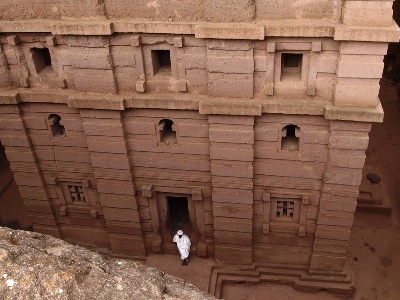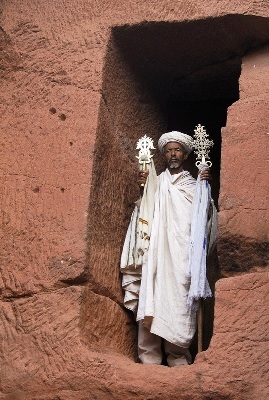“It comes without ribbons. It comes without tags. It comes without packages, boxes or bags. . .”
Christianity arrived in North Africa in the first or second century, coming first to Alexandria – the great melting pot of culture and scholarship. From there, it spread across North Africa and down the coastal cities to the east until it reached Ethiopia and was adopted as the official state religion in the fourth century – not long after Constantine declared it the religion of the Roman Empire in 312 CE.
Most of the spread of the faith to sub-Saharan Africa outside of the coasts came after European explorers and traders began to frequent African shores in the 15th and 16th centuries. Today, more than 350 million of the world’s Christians reside in Africa.
Although there are many, unique and beautiful ways of celebrating Christmas in Africa, an examination of Christmas in Ethiopia allows us a window back in time to the early Christian practices that were prevalent when traders on the maritime Silk Road routes came to Ethiopian and Somalian harbors to trade goods from around the world.

Some of the most enduring symbols of Ethiopian Christianity are its rock churches. Carved by hand into ancient lava domes, these churches – like the one picture here at Lalibela – are beautiful examples of the power of the faith in Ethiopia. The workmanship, still evident in the chisel marks on the walls, and the time it took to create these architectural masterworks is evidence of deeply held belief by the people who commissioned the work and by the men and women who forged it with their hands and minds. Although many early Christian churches and monastic cells are fashioned out of caves as in Cappadocia, the Ethiopian churches are greater works because they blend period architectural style with rock hard rock. Was the carving of the churches as statement about Peter? Was the placement of them in the ground in many cases a statement of the faith springing forth from the earth itself? Most of these buildings are still in use today and regularly visited by pilgrims and other faithful for services – especially on holidays.
Ethiopians celebrate Christmas on January 7th in accordance with orthodox Christian belief, and are one of the largest denomination of Oriental Orthodox Christians with some 40-45 million members. For Orthodox Christians, the holiday begins on January 6th – when people fast and begin to gather and sing songs. The weather throughout the country is warm at this time of year dipping into the 40’s to the 60s at night and because of this, people often gather outdoors to chant throughout the night. To accompany the chants, people play drums and shake sistra (plural of sistrum) as seen in this video from Ethiopia’s Orthodox Tewahedo* Church.

The next morning just before dawn, people change into white or light colored clothes. Traditionally a robe-like white garment called a shamma is worn, but in modern urban settings, white western-style dress is often seen. Then people join processions to churches for services at dawn to celebrate the birth of Christ. After services, people feast, sing, dance and men and boys play an ancient game called gena that is a form of field hockey.
Twelve days after Ga’nna, Ethiopians celebrate the baptism of Christ in a festival called Timkat that includes more services and more feasting – for several days. Notably absent from these Orthodox celebrations are the Nordic and Germanic hallmarks of Western Christmases – christmas trees, lights, gifts and characterizations of (the Turkish) Saint Nicholas as Santa Claus or his “bad cop” Black Peter. No reindeer either. Just a simpler, less commercial glimpse back into Orthodox practices from centuries past – but with uniquely Ethiopian cultural highlights.
To Ethiopian Christians everywhere and to Orthodox Christians of any sect – A very Merry Christmas.
(Words by Laura Kelley. Photo of Lalibela Rock Church and Ethiopian Priest at Lalibela by Eddiie Van Ryckeghem at Dreamstime; Photo of Lalibela Church Closeup by Alan Wellings at Dreamstime.)
* An interesting linguistic similartiy is found between the Amharic word Tewahado (which refers to the unified nature of Christ of the Orthodox Christian sects) and the Arabic word Tawhid which refers to the worship of one God.

